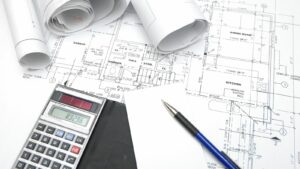The construction industry has always been a dynamic sector, constantly influenced by economic shifts, technological advancements, and regulatory changes. In recent years, construction costs have seen significant fluctuations, impacting everything from residential projects to large-scale commercial developments. Understanding these construction cost trends is crucial for stakeholders aiming to budget effectively and stay competitive.
Several factors drive these cost trends, including material prices, labor availability, and supply chain disruptions. For instance, the rising cost of raw materials like steel and lumber has led to increased project expenses. Additionally, the ongoing labor shortage has resulted in higher wages, further contributing to the overall cost. By keeping an eye on these trends, industry professionals can better navigate the complexities of construction budgeting and planning.
Construction Cost Trends
Material Prices
 Material prices significantly impact construction costs. Steel saw a 50% price increase between 2020 and 2021 due to supply chain disruptions and rising demand. Timber prices surged by over 100% during the same period, driven by housing booms and limited supply. Cement and concrete faced a 10% increase, influenced by production costs and transport logistics. Such sharp price fluctuations require careful budgeting and project planning to mitigate risks.
Material prices significantly impact construction costs. Steel saw a 50% price increase between 2020 and 2021 due to supply chain disruptions and rising demand. Timber prices surged by over 100% during the same period, driven by housing booms and limited supply. Cement and concrete faced a 10% increase, influenced by production costs and transport logistics. Such sharp price fluctuations require careful budgeting and project planning to mitigate risks.
Labor Costs
Labor costs have risen due to a combination of factors. A 4.4% wage increase for construction workers in 2021 is attributed to labor shortages and skilled worker demand. As of January 2022, the U.S. construction industry reported a shortage of 430,000 workers, elevating project timelines and costs. Competition for experienced personnel in the industry has intensified, pushing companies to offer higher wages and better benefits to attract and retain talent.
Regulatory Impact
Regulatory changes also affect construction costs. New green building standards, such as those mandated by the LEED certification, can increase initial construction expenses by up to 10%. Compliance with updated safety codes and zoning laws requires additional resources for training and implementation. However, these regulations present long-term savings and environmental benefits, making them crucial for sustainable construction practices.
Current Market Analysis
Regional Variations
 Construction cost trends exhibit significant regional differences due to labor rates, material availability, and local regulations. For example, construction expenses in urban areas like New York or San Francisco can be 20% to 30% higher compared to rural regions. The availability of skilled labor also varies, impacting wages and project timelines. Coastal regions often face additional costs due to stricter building codes designed to withstand natural disasters, further influencing overall expenses.
Construction cost trends exhibit significant regional differences due to labor rates, material availability, and local regulations. For example, construction expenses in urban areas like New York or San Francisco can be 20% to 30% higher compared to rural regions. The availability of skilled labor also varies, impacting wages and project timelines. Coastal regions often face additional costs due to stricter building codes designed to withstand natural disasters, further influencing overall expenses.
Sector-Specific Costs
Different construction sectors experience unique cost dynamics. Residential construction has seen a surge in expenses due to high demand for housing and material shortages, with prices for single-family homes increasing by 12% annually. Commercial construction, particularly office spaces, faces variable costs based on market demand and occupancy rates, seeing fluctuations up to 15%. Industrial construction, driven by logistics and manufacturing needs, witnesses steady growth with materials like steel and concrete being crucial expense drivers.
Technological Advancements and Their Impact
Technological advancements profoundly impact construction cost trends. These changes enhance efficiency, reduce costs, and improve project outcomes.
Innovative Building Materials
 Innovative building materials such as cross-laminated timber (CLT) and self-healing concrete contribute to cost efficiency and sustainability. CLT reduces construction time and labor costs due to its prefabricated nature and lighter weight compared to traditional steel and concrete. Self-healing concrete extends the lifespan of structures, lowering long-term maintenance costs. Additionally, materials like aerogels and nanomaterials offer superior insulation and strength, which help reduce energy expenses and increase durability.
Innovative building materials such as cross-laminated timber (CLT) and self-healing concrete contribute to cost efficiency and sustainability. CLT reduces construction time and labor costs due to its prefabricated nature and lighter weight compared to traditional steel and concrete. Self-healing concrete extends the lifespan of structures, lowering long-term maintenance costs. Additionally, materials like aerogels and nanomaterials offer superior insulation and strength, which help reduce energy expenses and increase durability.
Construction Automation
Construction automation technologies, including drones, robotics, and 3D printing, streamline various construction processes. Drones survey sites faster and more accurately than manual methods, reducing initial project costs. Robotics take over repetitive tasks such as bricklaying, minimizing labor expenses and errors. 3D printing constructs building components on-site, significantly cutting material waste and transportation costs.
Staying Informed
Construction cost trends are shaped by a myriad of factors, from economic shifts to technological advancements and regulatory changes. With material prices, labor shortages, and supply chain disruptions playing significant roles, staying informed is crucial for effective budgeting and competitiveness. Innovative technologies like BIM and new building materials offer cost-saving opportunities, while regional variations and sector-specific dynamics add complexity.

